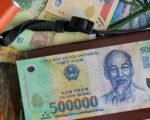Taiwan’s chipmaking giant is going all-in as global demand for semiconductors keeps climbing.
Taiwan Semiconductor Manufacturing Co. (TSMC) just greenlit a fresh $15.25 billion capital investment. That’s not pocket change—it’s a strategic bet on the future of chips, packaging tech, and factory infrastructure. And it comes at a time when the entire semiconductor world is hitting the gas pedal.
Betting Big on a $1 Trillion Future
TSMC didn’t throw that $15.2 billion number out lightly. The semiconductor industry is on an absolute tear, with forecasts projecting global sales to hit $697 billion by the end of 2025. That’s up 11% from 2024.
The wild part? It’s not slowing down.
Analysts say the sector could swell to $1 trillion by 2030. That kind of growth doesn’t come without serious capital behind it. TSMC knows the playbook—it’s been through enough boom-bust cycles to see where the real opportunities lie.
This latest funding will cover a wide range of investments: everything from cutting-edge chipmaking processes to more advanced packaging and good old-fashioned factory builds. It’s not just about staying competitive; it’s about setting the pace.
And they’re not alone. Samsung, Intel, and others are following similar tracks. But TSMC still holds pole position.
![]()
Packaging, Maturity, and Muscle
A good chunk of the money is going into what’s known as “advanced packaging capacity.” Sounds technical, but it’s really about squeezing more power into smaller chips—something crucial for AI, mobile, and HPC (high-performance computing).
At the same time, TSMC’s spreading the love to mature and specialty nodes—stuff used in cars, industrial equipment, and consumer gadgets. It’s a smart hedge. AI might be hot, but bread-and-butter tech still keeps the lights on.
And there’s this: building new fabrication facilities—fabs—is no joke. Each one can cost north of $10 billion. TSMC’s new plants in Arizona, Japan, and Germany are all part of this push.
Then there’s the less flashy but vital updates—boosting capacity in older plants, refining 5nm and 3nm processes, and prepping for the 2nm era.
Dividends Still Flowing
Even with billions going back into the business, TSMC isn’t shortchanging shareholders.
The board approved a dividend bump—from NT$4.50 to NT$5.00 per share. That’s about $0.155 in U.S. dollars. It reflects solid Q1 earnings of NT$13.94 ($0.432 per share), showing the company’s cash flow machine is humming right along.
This is important. Companies usually scale back dividends when gearing up for aggressive capital spending. TSMC? Doing both. That’s a flex.
It tells investors two things:
-
Management believes future earnings will be even stronger
-
The balance sheet can handle both reinvestment and payouts
TSMC has long used its dividend policy as a signal of financial strength. And this move sticks with that trend.
Cycles Still Lurk in the Background
Anyone who’s followed semiconductors knows how wild the ride can be. Booms followed by gluts. Then another boom. Rinse, repeat.
Over the last 34 years, the industry’s gone through nine major cycles. That kind of history teaches caution. But this current cycle? It feels different.
Why? Because demand isn’t just coming from one place.
Sure, AI is a massive driver. But there’s also:
-
Automotive digitization (think EVs and driver-assist)
-
Internet of Things (IoT) everywhere
-
Edge computing
-
5G and telecom infrastructure
-
Industrial automation
Basically, chips are now baked into everything. It’s not just about PCs and phones anymore.
Still, seasoned execs at TSMC know better than to assume infinite upside. They’ve seen downturns before. That’s why diversification—both in tech and geography—is baked into their current expansion plan.
Global Reach, Local Risks
Let’s not forget the geopolitical overtones here. TSMC is a crown jewel of Taiwan’s economy. But that also makes it a political flashpoint.
The company has been careful about spreading its operations. Arizona’s fab projects, the new Kumamoto facility in Japan, and planned investments in Europe are all part of a “de-risking” strategy.
Yet the majority of TSMC’s production—and its most advanced nodes—are still in Taiwan. Which means any flare-up in cross-strait tensions could send shockwaves through the global chip supply.
It’s a balancing act. And the stakes couldn’t be higher.
One-liner here again: The world needs TSMC more than TSMC needs any one country.








